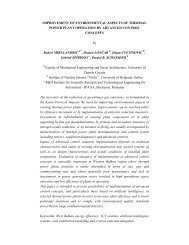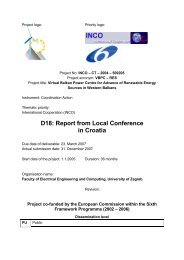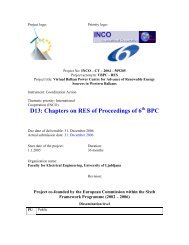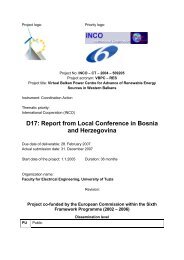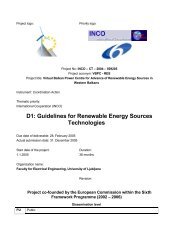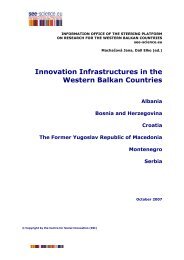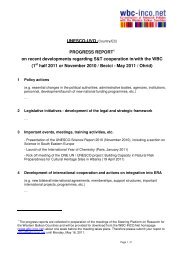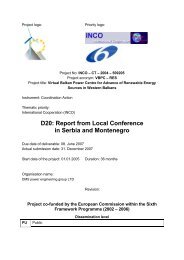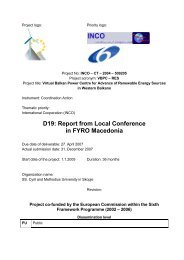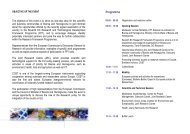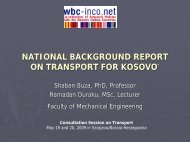Regional Balkans Infrastructure Study Transport - WBC-INCO Net
Regional Balkans Infrastructure Study Transport - WBC-INCO Net
Regional Balkans Infrastructure Study Transport - WBC-INCO Net
You also want an ePaper? Increase the reach of your titles
YUMPU automatically turns print PDFs into web optimized ePapers that Google loves.
!" # $ $ $%&<br />
The information received was then studied and validated by the Consultant,<br />
who also discussed the information with the authorities and inspected selected<br />
sections of the network. In some cases where reliable information was not<br />
available, the review was based on estimates and assumptions by the Consultant<br />
,, 3 $ 0 4<br />
The geometrical characteristics of the core road network varies substantially -<br />
from 2-lane roads with less than 7m pavement to 4-lane roads and motorways,<br />
as shown in Figure 2.7 overleaf. Generally, the roads have sufficient capacity to<br />
carry the present traffic, although some sections in and around cities are in need<br />
for capacity improvement.<br />
Corridor X has 4 lanes on most of its sections, except for the southern part,<br />
while the other corridors and routes have 2-lane roads. In the central part of the<br />
region bottlenecks of around 870 km of roads need widening or realignment<br />
due to insufficient pavement width. These roads have less than 7 m carriageway<br />
which is considered to be the minimum (refer Chapter 3.2.2) or the curve radii<br />
are too small.<br />
Whereas the roads mostly have the sufficient capacity to carry present traffic<br />
volumes, the road conditions are often poor due to several years of neglected<br />
maintenance. Over 70% of the road network was found in need for some form<br />
of pavement renewal or rehabilitation. The situation may be summarised as follows<br />
("wearing course" refers to the top layer of the pavement whereas the<br />
"overlay" is a structural layer which increases bearing capacity):<br />
• Roads without problems 28 %<br />
• Roads which need new wearing course 25 %<br />
• Roads which need pavement rehabilitation 24 %<br />
• Roads which need overlay + new wearing course 12 %<br />
• Roads which need complete new pavement 11 %<br />
However, there are major differences from country to country. The best pavement<br />
condition is found in Croatia, where the majority of the roads are in good<br />
condition. In Albania the roads are either newly rehabilitated or badly in need<br />
of complete reconstruction because the traditional pavement is a penetrated<br />
macadam which is not able to resist present and future axle loads.<br />
Corridor X shows a reasonably good pavement condition, however with a need<br />
for a new wearing course and on the southern sections also combined with an<br />
overlay.<br />
Road conditions are shown in Figure 2.8.<br />
29



